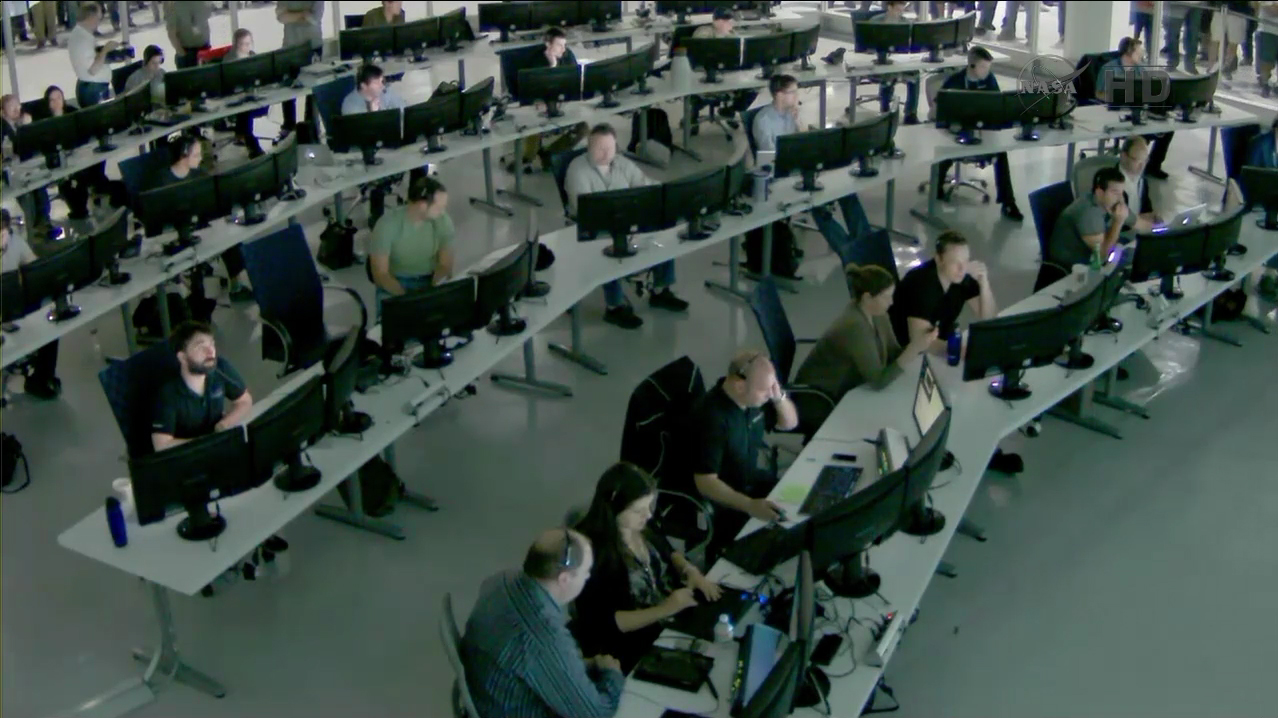SpaceX Dragon Capsule Splashes Down in Pacific, Ending Historic Test Flight

This story was updated at 11:59 a.m. EDT.
The world's first commercial space cargo ship dove through Earth's atmosphere and splashed down in the Pacific Ocean early Thursday (May 31), ending an historic test flight to the International Space Station.
The SpaceX Dragon capsule made a water landing off the coast of Baja California, Mexico at 11:42 a.m. EDT (1542 GMT). Recovery ships have spotted the capsule and are en route to collect the vehicle to tow to Los Angeles.
Mission Control in Houston informed the space station crew that the capsule's red-and-white striped parachutes were visible.
"That's good news," NASA astronaut Don Pettit radioed back.
Dragon departed the space station earlier today, when it was released from the outpost's robotic arm after being plucked from a docking port on station's Earth-facing Harmony module. The unmanned capsule began its return to Earth in earnest at 10:51 a.m. EDT (1451 GMT) with a nine minute, 50 second de-orbit engine burn.
Dragon became the first private vehicle to visit the space station when it docked there May 25, three days after launching atop a SpaceX Falcon 9 rocket from Cape Canaveral, Fla. The capsule spent a total of five days, 16 hours and 5 minutes attached to the $100 billion orbiting laboratory. [Dragon Capsule's Space Station Arrival in Pictures]
Breaking space news, the latest updates on rocket launches, skywatching events and more!
"It was a major success for us," Dragon mission director John Couluris of SpaceX said during a news conference yesterday (May 30). "The trust and hard work that NASA helped SpaceX with were really important. The ability to get to the space station on our first time, to not only rendezvous but to berth — we would call that mission alone a success."
SpaceX's test drive for NASA
The nine-day Dragon flight was a test run for the 12 cargo-delivery flights SpaceX (short for Space Exploration Technologies Corp.) is contracted to fly for NASA for a total of $1.6 billion. The Hawthorne, Calif.-based company was founded in 2002 by billionaire entrepreneur Elon Musk, who also co-founded PayPal.
"We are hoping to continue working with NASA and hopefully flying crew within three years," Musk said. "This was a crucial step and makes the chances of becoming a multi planet species more likely."
Though this flight is only Dragon's second-ever trip to orbit, the mission went smoothly from end to end, with all the major milestones achieved without mishap.
That Dragon's re-entry and splashdown went well marks another significant achievement, as the spacecraft is alone among the automated cargo freighters that service the space station in its ability to carry supplies not just up, but down.
While the cargo-delivery spacecraft built by Russia, Japan and Europe are designed to burn up during re-entry, Dragon is equipped with a heat shield and parachutes to survive the fiery plunge.
Dragon is packed with 1,367 pounds (620 kg) of crew items, used hardware and completed science experiments for its return trip. On the way up, the spacecraft delivered student-designed experiments and food, clothing and other supplies for the station's astronauts.
Will astronauts be next?
SpaceX is one of two private firms receiving NASA funding to develop robotic cargo spacecraft (the other is Orbital Sciences Corp. of Dulles, Va.). SpaceX is also competing for a NASA contract to carry crew, as well as cargo, aboard Dragon.
Officials say if work proceeds on schedule, the first humans could fly on Dragon as soon as 2015. The capsule, which measures 14.4 feet tall (4.4 meters) and 12 feet wide (3.7 m), is designed to fit up to seven astronauts aboard.
You can follow SPACE.com assistant managing editor Clara Moskowitz on Twitter @ClaraMoskowitz. Follow SPACE.com for the latest in space science and exploration news on Twitter @Spacedotcom and on Facebook.

Clara Moskowitz is a science and space writer who joined the Space.com team in 2008 and served as Assistant Managing Editor from 2011 to 2013. Clara has a bachelor's degree in astronomy and physics from Wesleyan University, and a graduate certificate in science writing from the University of California, Santa Cruz. She covers everything from astronomy to human spaceflight and once aced a NASTAR suborbital spaceflight training program for space missions. Clara is currently Associate Editor of Scientific American. To see her latest project is, follow Clara on Twitter.


